 What do our students have in common with former NBA basketball star Wilt Chamberlain and Habs’ goaltending great Jacques Plante? They have all been held back by social conformity, more commonly known as peer pressure. This is not about teen anxiety and the pressures of fitting in with the latest trends. It is about something bigger.
What do our students have in common with former NBA basketball star Wilt Chamberlain and Habs’ goaltending great Jacques Plante? They have all been held back by social conformity, more commonly known as peer pressure. This is not about teen anxiety and the pressures of fitting in with the latest trends. It is about something bigger.
Psychologists and sociologists tell us that social conformity has a huge impact on adults as well. In fact, it is probably the single greatest factor that inhibits people from being innovative or open to new ideas.
Let me illustrate with two simple examples. November 1, 2016, marked the 57th anniversary of the first time that Jacques Plante wore a mask in an NHL game. Plante had already taken many pucks to his face and subsequently developed the first protective facemask. But he only wore it in practice. Canadiens coach Toe Blake refused to let him use it in games, thinking it would obscure his vision and probably because it wasn’t considered “manly” and might portray the team in a negative light. Blake wanted to conform to the league norm; he did not want the Canadiens to be mocked by other teams or the media. But after being stitched up after a shot to the face against the NY Rangers, Plante insisted and Blake reluctantly agreed. That piece of equipment has since protected thousands of players and is now a critical part of every goaltender’s gear. The resistance to integrating Plante’s innovation is an example of the restrictive power of social conformity that prevented basic protection and safety.
Another example is outlined by sociologist Malcolm Gladwell who tells the story of Wilt “the Stilt” Chamberlain, one of the greatest professional basketball players of all time. Despite his extraordinary achievements on the court, he too was held back from even greater performance by peer pressure.
At seven feet two inches, Chamberlain dominated more than any player in the contemporary game of basketball. He is the only player in NBA history to have scored 100 points in a game, a record that most experts believe will never be matched. When Chamberlain retired in 1973, the NBA record book for that year listed 128 records that he held. As of last year, 98 of those records still stood, decades after his departure.
Despite his achievements, Chamberlain was also a victim of peer pressure. As Gladwell reminds us, it takes significant social courage to be truly exceptional at anything. It is hard to defy norms or conventional practices and the pressure to conform holds us all back every day.
So given Chamberlain’s achievements, how did he succumb to peer pressure? It happened at the free-throw line. Chamberlain’s teammate, Rick Barry, showed him that throwing underhanded was a more natural motion and would lead to more baskets. Chamberlain did that for a while but was mocked. People said he looked ridiculous.
So Chamberlain went back to the overhanded shot and his free throw percentage diminished notably. Despite setting records, he probably could have been even greater if he wasn’t concerned about peer pressure and what people thought of him.
What are the key takeaways? Simple. In so many domains, if you want to stand out, if you want to try to be unique or innovative, you have to have the courage to defy peer pressure and social norms. Otherwise you will likely only be working around the edges of tried-and-true practices.
I asked our high school students to think about how and where they can try to innovate, despite social norms. This also applies to student learning habits, especially when in groups. Students need the courage to be less concerned about what their peers think in a classroom setting, particularly when they develop a unique idea or when wrestling with a problem. It’s asking a lot, but with practice, students can build their confidence and take pride in developing their own ideas that may vary from the perspective of the majority. – Chris Shannon, Headmaster

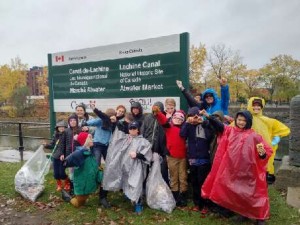 Malgré le froid et la pluie, nous étions 19 pour la 5e édition du grand nettoyage des berges du canal Lachine. Cette année, nous avons eu la joie d’avoir des élèves du Junior School.
Malgré le froid et la pluie, nous étions 19 pour la 5e édition du grand nettoyage des berges du canal Lachine. Cette année, nous avons eu la joie d’avoir des élèves du Junior School.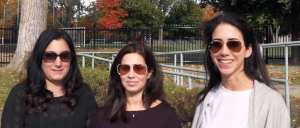
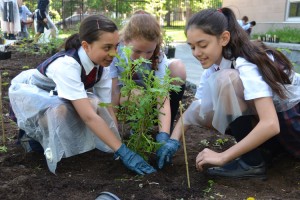 With pollinators like bees and butterflies in dangerous decline and our reliance on them for almost 90 per cent of the world’s plants, a crisis is brewing and LCC students responded with fervor. Last spring, students from grades 3 to 11 literally rolled up their sleeves and got down in the dirt, creating a garden on the LCC grounds to bring back the butterflies.
With pollinators like bees and butterflies in dangerous decline and our reliance on them for almost 90 per cent of the world’s plants, a crisis is brewing and LCC students responded with fervor. Last spring, students from grades 3 to 11 literally rolled up their sleeves and got down in the dirt, creating a garden on the LCC grounds to bring back the butterflies.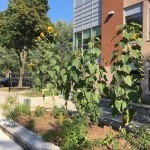
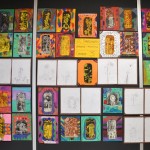
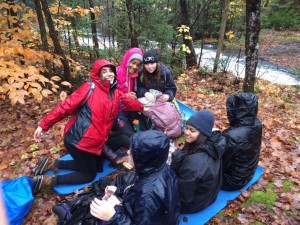 To complete the adventure aspect of our Duke of Edinburgh Silver Award this year, a few grade 10 students went camping at Camp Kanawana for four days on the weekend of October 21.
To complete the adventure aspect of our Duke of Edinburgh Silver Award this year, a few grade 10 students went camping at Camp Kanawana for four days on the weekend of October 21.